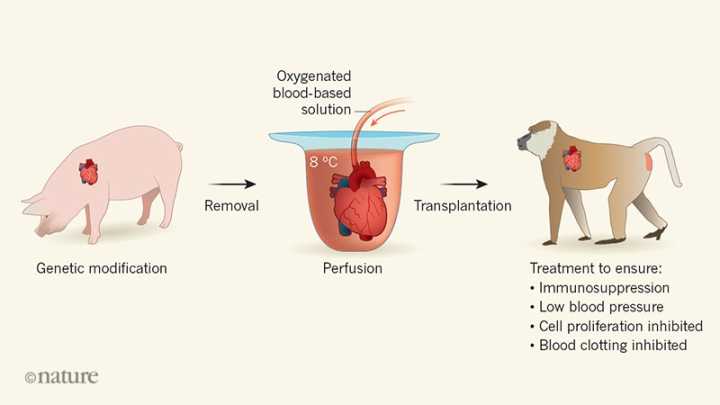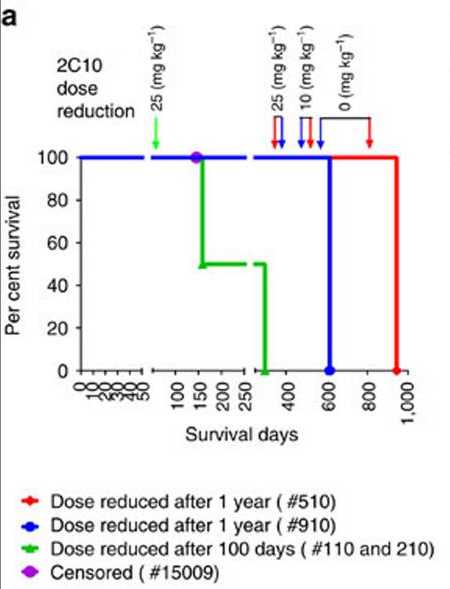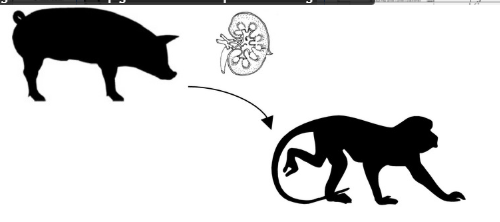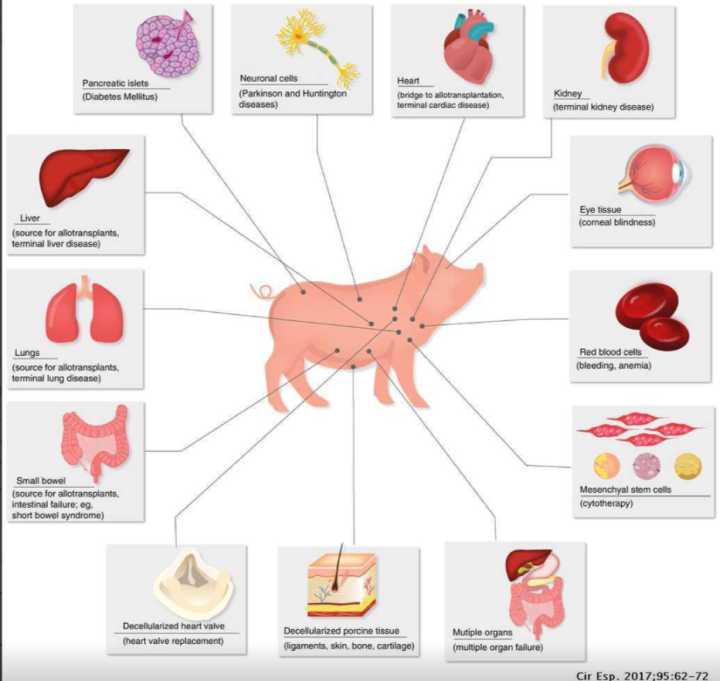This track China is currently the world leader.
When it comes to organ transplantation, everyone is very familiar with it. After all, this is a very common technique. Kidney transplantation, liver transplantation, etc. are all familiar organ transplantation operations.
So. What about xenotransplantation? I believe that many people still think that this technology may be sci-fi technology or something. After all, this technology often exists in various future predictions, or it is feasible but it should be very far away.
However, this technology may not be that far away, and may even be a technology that will be implemented in the near future.
——Heart transplant survival up to 945 days————
In 2016, through the genetic modification of pigs, three genetic modifications were made, namely knocking out the GGAT1 gene (used to eliminate stress rejection during transplantation) and overexpressing hCD46 (used to solve immune problems) , hTBM (thrombomodulin), and transplanted this genetically modified heart into a baboon.

As a result, the baboons survived for 945 days, which is basically close to 3 years.

This is the longest recorded survival time to date after transplantation from pigs to primates.
Not just the heart.
———Kidney transplant survival up to 499 days ———
In 2019, researchers at Emory University in the United States also used pigs for xenotransplantation. This time, they used pig kidneys.

The genes were also modified, respectively knocking out the GGAT1 gene (used to eliminate stress-induced rejection during transplantation), and overexpressing hCD55 (human immune gene CD55, used to reduce immune rejection). immunosuppressive regimens, such as the combination of αCD4 and antiCD154.
As a result, the macaque survived for 499 days.
——Not just ordinary primates, in fact, there have been human transplants————
Xiangya Hospital, which is relatively strong in China, has carried out the transplantation of pig islets to humans
Completed a clinical study of porcine islet transplantation in 10 patients with type 1 diabetes. Compared with preoperative, the patient’s overall insulin use was reduced by more than 60%, and the best effect was reduced by 90%. According to the internationally recognized comprehensive score of islet transplantation, the average score is 0.62, and the best score is 0.88 (1 point for complete cure of diabetes)
In fact, it has the significance of clinical application.

In addition, xenotransplantation has been carried out including islets, skin, cornea and many other organs.

Currently, pigs are the most advanced of all xenotransplantation species, far ahead of other species by at least one to two eras.
It is worth noting, however, that organ transplantation in primates is currently successful in basically heterotopic transplantation over a long period of time, in other words, the organ does not truly take over the original position and replace the original organ.
The real xenotransplantation we are looking forward to is the replacement of the original organ with a new xenogeneic organ.
This step is still in progress, and I think in 15 years, a preliminary organ replacement will almost appear.
————Under life, everything else is trivial————
In fact, xenotransplantation has always faced many obstacles, such as medical obstacles, immune problems, operation problems, postoperative care problems, etc. However, the most troublesome is the ethical problem.
However, are these issues so important in the face of life?
Many times, when we make an evaluation or a so-called choice, we actually do it when there is no need to make a choice for the time being, so to a certain extent, it is “it doesn’t matter to us to hang up.” However, at that moment, Maybe this problem is not a problem at all.
Organ gaps are the biggest problem.
Organ shortages are a global problem, and despite organ donations all over the world, very few organ transplants are actually possible.
In my country, there are more than 10,000 people who can successfully complete organ transplants every year, and the gap of people who need organs is as high as 1.5 million. With the advancement of aging in the future, the gap will increase.
Limited by practical problems and the status quo that medical ethics prohibits human cloning, it is impossible for human cloning to be allowed in the foreseeable future.
Human cloning is unlikely to be allowed for the foreseeable future
So, at this time, xenotransplantation is actually in front of us.
For xenotransplantation, it is actually not that simple.
1. The size of the creature should be relatively matched
This actually directly excludes the vast majority of creatures. Many people may not realize that in nature, there are not many creatures that are similar in size to humans. Whether it is cats, dogs or common experimental animals, mice are too different from humans (in fact, other problems also exist, such as The rat’s heart beats 400 to 500 times). And large mammals have the same problem.
2. Organs should be relatively inexpensive
This problem is actually a very obvious problem. If a xenogeneic organ is extremely expensive, its significance will be greatly reduced. After all, the vast majority of today’s people still cannot use medical resources without limit and can treat money like dung. The problem of returning to poverty due to illness It is already a real problem.
In this case, pigs become an important source
1. Pigs and humans are very similar in size. Pigs are actually about the same weight as adults.
2. Pigs and humans have the same diet and metabolism.
As a creature kept in captivity by humans, pigs are actually fully adapted to human life. Humans eat all pigs. Compared with horses, cattle and sheep, pigs are omnivorous creatures.
3. Pigs are relatively cheap.
So, on the search engine, search for xenotransplantation, and you will find that the top is all pigs.
I believe some people will ask, aren’t primates very close to humans? Why not use primates?
Primates are a good choice, after all, they are the closest relatives to humans, but primates face several problems
1, the price is very expensive
Taking the current laboratory as an example, the cost of a monkey is already very expensive.
2, the body shape is quite different
It may be different from what many people think. In fact, most primates are very different from humans in size. The macaque monkeys most used in the laboratory are only more than 50 centimeters tall, which is the height of most people’s knees, and weigh 5-7kg, which is equivalent to a 2-month-old baby. Such animals cannot be transplanted into humans, and the organ size match is too low.
Orangutans are a good choice, but very little research has been done with them.
3. The ethical issue is bigger
Ethical issues are an important factor, and perhaps even a major factor, constraining primate research.
In fact, in this epidemic, I believe everyone has seen that domestic vaccines are the fastest and most widely researched. Apart from our sufficient scientific research strength, a very important factor is that the monkeys needed for vaccine experiments are basically in China.
4. Primate size is not easy to expand
Like humans, for the most part, primates aren’t multiple births, which means it’s actually hard to scale up.
——Reality and Future————
Sometimes when I think about it, the word “future” is really interesting, because it literally means: it has not yet come.
In fact, there are several ideas for solving organ problems, but most of them are “ideas”! of the future that has yet to come.
1. Stem Cell Technology
Promising star technology, but currently unable to grow into organs.
2. 3D printing technology
What needs to be solved now is how to maximize the biological activity of an organ. Although it has been achieved that the lungs can have a certain autonomy or the heart can beat, it is very far away from the organs.
3. Cloning
In fact, cloning is the most ideal way. Many people hope to grow organs from their own cells, but unfortunately, we currently do not have the ability to clone an organ [individually].
One strategy is to let the clones develop to the embryonic stage and then take the organs. However, this is illegal.
Then, in the face of the future that “has not yet arrived”, and the present living in the present, we can only make a compromise.
Xenotransplantation is a practical strategy, which is a living organ derived from animals, and can be transplanted and survived clinically.
Well, it may be the “only strategy” until the future arrives.
As for the issue of rejection and the lifespan of organs, these are of course important factors, but they are not the core factors. After all, for many people, it is worthwhile to extend one day.




GIPHY App Key not set. Please check settings